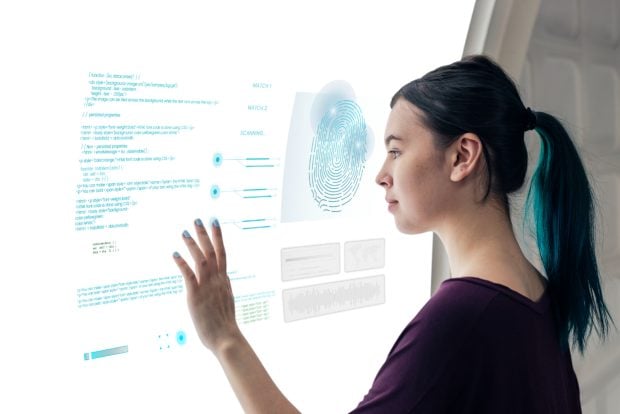Faster, broader, safer: linked data’s potential to transform government decision-making

In an uncertain world, public data is helping us tackle complex and cross-cutting issues. Dominic Hale, head of strategy for the Integrated Data Service at the Office for National Statistics, sets out how the UK government can unlock more insight thanks to a step-change transformation now under way in how researchers can access public data
The challenges of recent years have brought seismic changes to the country’s economy and society. Measuring and understanding these demanded a joined-up approach to sharing data and the skills to answer questions with statistics quickly and securely. From linking Census and NHS data to track coronavirus’ impact among minority ethnic groups, to the linking of timely local data sources to support local authorities’ responses – quality data ensured that informed decisions could be made at pace.
As new challenges emerge, joined-up data is becoming more important than ever. This makes the drive to find new and innovative ways of collecting and combining it critical. The Integrated Data Service (IDS), a collaboration among organisations to work on projects that shed light on the big issues of the day, will see ready-to-use datasets made available to accredited cross-government teams and researchers, enabling them to securely share, link and access them for vital research.
Sir Patrick Vallance, as part of his remit as the UK’s national technology adviser, recently recommended that the government should facilitate greater industry access to public data and prioritise wider data sharing and linkage across the public sector, to help deliver the government’s public services transformation programme. In response, the government detailed that they continue to support the delivery of IDS as the “single data analysis and dissemination platform in government”, adding that departments will engage to agree data sharing agreements with IDS.
The challenge up until now has been the availability of data. The Office for National Statistics and other government departments hold a lot of data, but we’ve each adopted our own unique data standards. This has prevented us from joining those assets together. Now that we are breaking down former barriers in concert with other departments, more de-identified data is becoming available, and IDS is set to streamline the joining process, by adopting common data standards. By enabling departments to work together in a more joined up way, the IDS will help develop a culture of data sharing, enhancing the capability of the UK government statistical system to better inform policy, delivery, and democratic debate.
Dominic Hale will be a panellist on Global Government Forum webinar ‘Data mine: how can government get better at sharing information’ on 30 March. Register free here.
Right now, sharing and linking data takes time but the IDS is the government’s vehicle to transform efficiency. Imagine if analysts had the rich bank of linked data required to enact swift and targeted policy the moment that the pandemic hit. The IDS will allow us to get ahead of the data needed to answer questions we don’t yet know we need to answer. We’re actively bringing together data from a variety of departments, standardising these data and linking them, so as soon as the need arises, we are able to rapidly take stock of a situation and take appropriate action.
The service will extend its operations, bringing in more accredited researchers and government analysts later this year and is currently in a beta-phase of development. But, already the IDS has combined novel datasets to unlock fresh insights about our society and economy. From understanding how education impacts a person’s lifelong health and employment outcomes, to bringing together already published statistics from diverse sources to provide a rich, granular view of what people and businesses are doing in response to climate change and the impact of those actions.
When it comes to the services’ future potential, accessibility is key. Rather than creating a data-lake, or warehouse, of individual datasets, the IDS will enable accredited researchers to request access to the latest available data from across departments at the point of request.
There’s only so much you can achieve with a single dataset and the real power of data are unlocked by joining them, allowing researchers to run deeper analysis. Some government departments are doing this already, but our ambition is for this approach to become standard practice. Right now, we’re working with the Department for Levelling Up, Housing and Communities to build an integrated data asset that will be refreshed in real-time to give policymakers the most recent snapshot of regional economic growth. Going forward, challenges as significant as economic recovery, and our progress toward net zero, will be key use-cases for integrating data at scale, across departmental boundaries.
To improve everyday life on the issues that truly matter, whether that’s boosting public transport or reducing hospital waiting times, we must also articulate the benefit of sharing data to the public. To reduce hospital waiting times where do we need to focus? Is it infrastructure, is it more hospitals, is it more doctors? Through the research that linked data enables, we can get to the heart of today’s issues and identify the measures needed.
The government model places a protective bubble around data assets held within its departments, but we have made considerable progress to provide as much openness as possible, while maintaining the highest standard of ethics and security. Within IDS, all data are anonymised at the point of access so no individual can be identified.
The challenges of the last couple of years have demonstrated most vividly the benefits of fast, inclusive, and accurate data. The pandemic was perhaps the first time in living memory that public data became a topic of everyday conversation. Our challenge now is to continue to build engagement with the statistics that our society needs most, whilst also continuing efforts to share best practice, increase openness and improve data literacy.
Want to write for GGF? We are always looking to hear from public and civil servants on the latest developments in their organisation – please get in touch below or email [email protected]




















